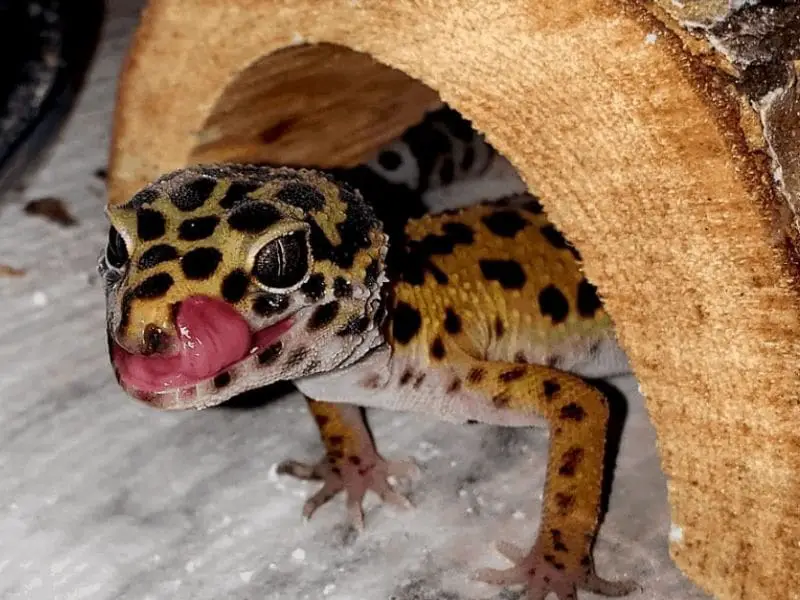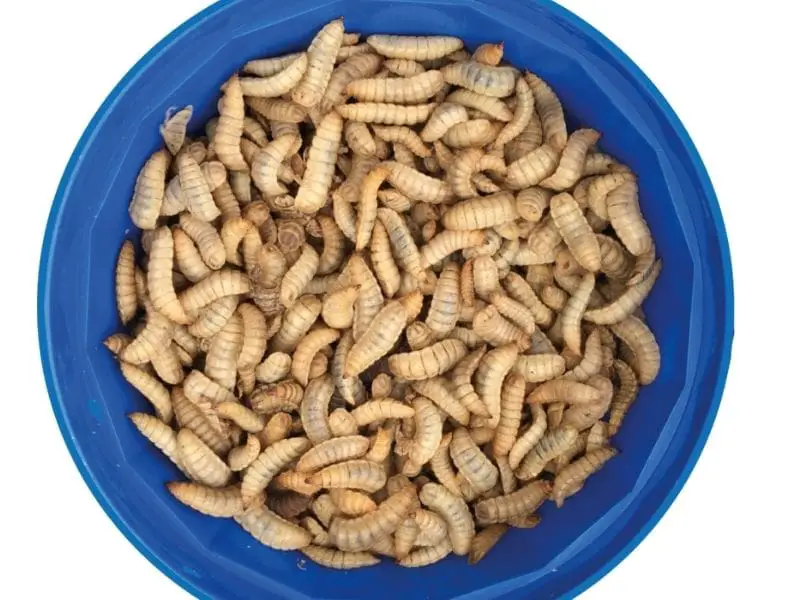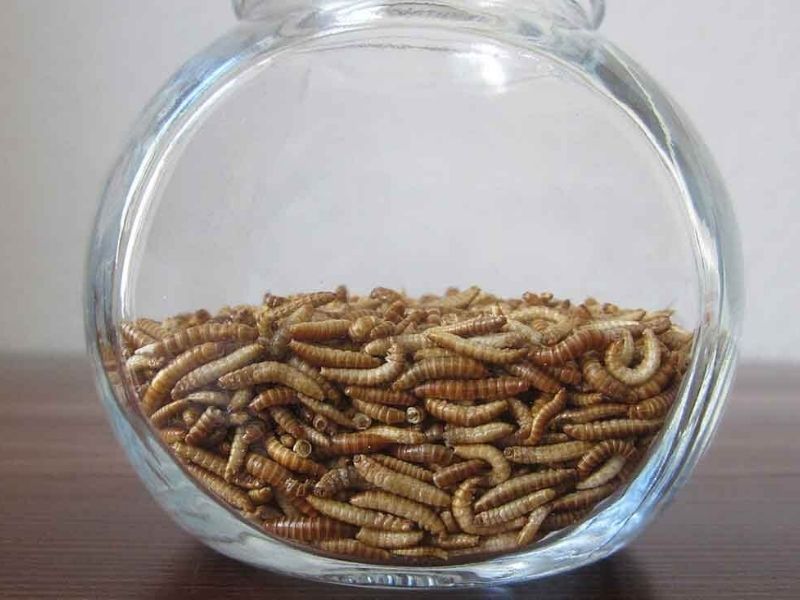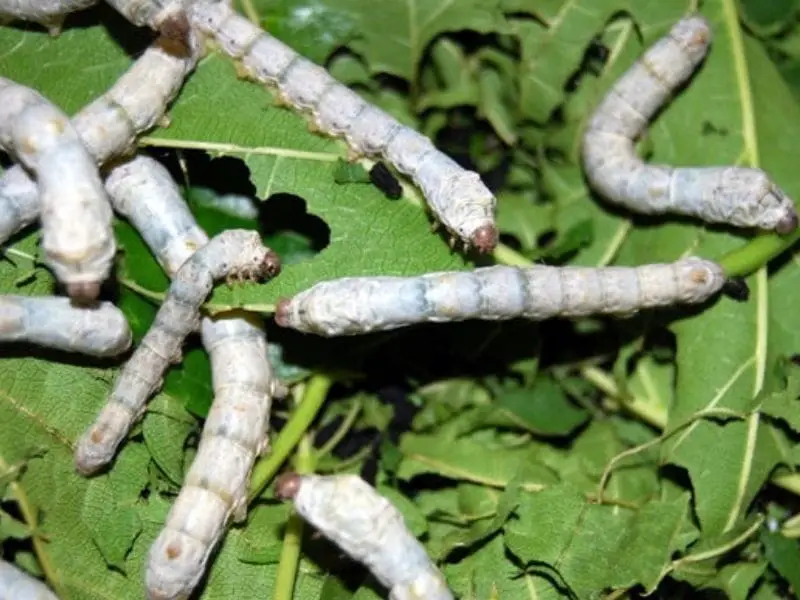Many types of worms are a great source of nutrition for leopard gecko pets. They provide protein, calcium, and fat. However, there are some worms that are recommended for geckos, and others are not good for the reptile.
Leopard geckos eat different types of worms including mealworms, superworms, silkworms, and phoenix worms with the exception of earthworms. Most types of worms nourish geckos with proteins, calcium, and other important dietary requirements.
Can leopard geckos eat earthworms?

Leopard geckos can eat earthworms, but they should not be their main source of food. In fact, the geckos do not like eating earthworms because they secrete an unpleasant substance when under duress that the lizards don’t like.
Earthworm can provide a good amount of protein and fat to gecko pets, but also contain high levels of calcium that is bad for the animal’s long-term health. This type of worm can cause kidney stones in leopard geckos over time because it contains too much calcium and phosphorus.
Types of Worms to Feed a Leopard Gecko
Various types of worms can be eaten by leopard geckos without any problems, including black soldier fly larvae (larvae), mealworms, waxworms, silkworm pupae, etc. They all offer different nutritional benefits for lizards that can vary from one type to another.
Here are the types of worms you can feed your leopard gecko:
1. Waxworms

You can feed your gecko waxworms, which are high in fat and protein. They also offer a great source of calcium for the gecko as well. This is the most nutritious type of worm you can feed your gecko because they are high in fat, protein, and energy.
Waxworms can make up one-third of your leopard gecko’s diet. However, it is good to feed 1-3 waxworms your gecko 1-3 times per week depending on the size of the reptile.
Here’s a table with waxworm feeding information for leopard geckos:
| Nutrition | Fat 22.19%, Protein 15.50%, Fiber 7.69% |
| Number of worms | 3-5 waxworms |
| Feeding frequency | 1-3 times per week |
Pro tip: Feed leopard geckos waxworms sparingly. Geckos can easily become spoiled on waxworms and soon enough, you may notice them refusing to eat other foods.
2. Superworms

Superworms are a great food for your gecko because it provides them with the perfect balance of protein, fat and other nutrients that make up their diet. You can offer one or two superworms per week as treats to your gecko to keep it happy and healthy.
Feeding your gecko too many superworms can lead to obesity because of the high fat content, so make sure to monitor your gecko’s weight and limit its intake.
The general rule of thumb is that you can feed your lizard 2 feeder superworms for every inch of the gecko’s length. Use superworms
| Nutrition | 60% moisture, 19% protein, 16% fat, 4% fiber. |
| Number of worms | 1-3 superworms |
| Feeding frequency | Once a week |
Note: For baby leopard geckos, superworms can be too big and difficult to chew. Limit feeding them this food until when they grow to at least 6-8 inches long.
READ MORE: Leopard Gecko Superworms: Nutrition and Safety Measures
3. Butterworms

Butterworms can be great food for leopard geckos. They are widely available and provide the perfect amount of protein, fat, calcium, sodium, phosphorous, magnesium, and vitamins A to D without being overly rich in any one nutrient which is important when feeding lizards because of their small stomachs.
Butterworms also help prevent constipation among other things because the worms’ diet consists primarily of high-fiber plant material such as leaves from palm trees or old coconuts that contain cellulose.
Feed your leopard gecko 5 butterworms per day to keep them well-fed and healthy.
| Nutrition | 60% moisture, 16% protein, 17% fat, 1% fiber |
| Number of worms | 2-5 butterworms |
| Feeding frequency | Once a week as a treat. |
Note: Leopard geckos can get addicted to butterworms quite easily, so use them as a treat only. Their high fat content can also make your gecko obese. You want to give just a few of these worms just once a week to keep the reptile’s weight in check.
Caution: Butterworms secrete an acid-like substance that can irritate the gut of your pet, so limit the number and frequency of feeding your leopard gecko with them.
4. Phoenix worms (calci worms)

Phoenix worms(black soldier fly larvae) are commonly used as a feeder insect for reptiles, and can be an excellent choice as a treat. In terms of nutrition, they provide the leopard gecko with high moisture content, protein, calcium to keep bones strong; and vitamin A which is necessary for eye function and reproduction.
The phoenix worm should not be offered more than once per week or it may contain too much fat in its tissue that can lead to obesity in reptiles.
In addition, phoenix worms have around 200mg of chitin per gram so while it’s very nutritious, they can cause impaction in your gecko’s gut that can cause discomfort and even death.
It also shouldn’t be just any old phoenix worm that you’re picking up from pet store shelves – make sure you get them from reputable breeders who don’t use pesticides on crops where their ingredients come from.
| Nutrition | 64% moisture, 17% protein, 11% fat, 6% fiber |
| Number of worms | 2-5 (depending on the size) |
| Feeding frequency | Once per week |
5. Buffalo worms

Buffalo worms are the larvae of a small beetle and are about 1cm long. Due to their small size, they’re commonly used as a mealworm” type of insect food for pet geckos and lizards.
Buffalo worms are a great type of worms to feed leopard geckos with. They are specifically great for baby geckos because of their small size, thin exoskeleton,and softer texture.
- Feed one or two small pieces per mealtime to the lizard (do not exceed three in total)
- When handling them be sure to use gloves for hygiene purposes.
The nutritional value comes from calcium, protein, fat, and fibre which all contribute to healthy bones and muscle growth – allowing them to grow into strong adults.
6. Hornworms

Leopard geckos are omnivorous, meaning they eat other organisms in addition to insects. A diet that includes hornworms is an important part of their feeding regime. Hornworm larvae, in particular, are the perfect size for juvenile leopard geckos.
They are a great source of nutrition for leopard geckos due to their high protein content and low fat levels. Feed hornworms to your geckos once per week.
In the wild, leopard geckos use their keen sense of smell to find hornworm larvae underground and under logs or stones where they live. They then pierce the grubs with sharp teeth on the end of their snouts. This allows them access to a nutritious meal hiding beneath the ground’s surface without having to dig too deeply for it.
READ ALSO: Can Leopard Geckos Eat Mealworm Beetles?
7. Red Worms

Red worms make an excellent live food choice for leopard geckos in captivity. They are a good source of protein and are a good size for geckos to easily swallow. Red worms can be fed raw or alive.
I would recommend you feed your gecko live rather than when dead because they may not survive if exposed to the elements.
How many red worms should I give my leopard gecko? A typical feeding would include four red worms per day with an occasional treat of two more. Live food typically needs less frequent feedings than prekilled options because they don’t spoil as quickly in captivity when given proper care.
Feeding too much leads to obesity which puts stress on their internal organs such as the liver and kidneys.
You can source redworms from bait shops or pet stores that sell fish products.
8. Silkworms

Leopard geckos like to eat silkworms, but do not offer them more than a few at a time. Here’s the nutritional value of silkworms for leopard geckos:
| Nutrition | 79% moisture, 13% protein, 2% fat |
| Number of worms | 1-3 (depending on the size) |
| Feeding frequency | Twice a week |
The number of silkworms that you should offer your leopard gecko is based on the size of the animal; don’t feed it too many or else they will get sick from lack of nutrition and start to regurgitate their meal.
Silkworm pupae are high in protein with about 27% crude protein per 100 grams (roughly 400 calories), making them an excellent food for reptiles. They also contain fats and carbohydrates which provide essential nutrients for animals that need less energy due to being cold-blooded ectotherms.
Silkworm pupae are generally considered better than larvae as a source of nutrition because of their high protein content suitable for leopard gecko pets.
What NOT to Feed Leopard Geckos
While you can get away with feeding your pet reptile small quantities of some of the foods listed below, I would not recommend that you make them a staple. Some of these foods can irritate the gut of the pet, leaving him/her with a lot of discomforts.
Here are foods not to feed your leopard gecko:
Earthworms
Earthworms are not the best food for leopard geckos because they have a hard time digesting them. These worms secrete a slimy goo that can get stuck in a gecko’s mouth and the gecko will not be able to swallow it.
Earthworms also have an unpleasant odor which leopard geckos may find off-putting.
Crickets
Crickets are not the best food for leopard geckos because they often contain parasites that can harm your leopard gecko’s health.
Roaches
Insects like roaches and locusts may be too tough to chew on and will make it difficult for a leopard gecko to eat.
Fruit
Leopard geckos are not fruit eaters, and they can get sick from eating too much. They don’t need it to survive on their diet of mealworms and crickets, so let them have the bugs instead!
Leopard geckos should be fed a regular diet of mealworms or crickets with occasional feedings of wax worms (which come in small quantities).
Feeding your leopard gecko fruits or other foods that aren’t part of its natural diet could lead to health problems like diarrhea. It doesn’t mean you can never offer these types of food; just do it sparingly as treats only every once in a while.
Can you feed leopard geckos exclusively on worms?
In a word, no. Mealworms are an important part of the leopard gecko diet and can be included in meals as often as needed.
The rest of their food should consist of crickets or other feeder insects that do not have hard shells such as wax worms Note that you shouldn’t offer your lizard too many of the worms discussed above at once because they’re high in fat and can make your gecko become overweight.
Leopard geckos also need vitamin supplements to make up for what they can’t get from bugs alone. While it is possible to have mealworms only with other occasional treats, this will lead to nutritional deficiencies over time when properly supplemented with vitamins.
It’s better if you stick to a balanced diet!
The frequency at which leopard geckos are fed depends on the size of their insects or worms. Generally, juveniles can eat one or two medium-sized insects each feeding whereas adults need larger prey items like locusts that measure as long as six inches (152 mm). Wait for 24 hours after eating before you offer them another meal.
Resources and references
- Brad Lock, DVM, DACZM, Veterinary Partners: Kidney Disease in Reptiles
- Gabby Wimer, University of Chicago Magazine: The diet of worms
- Jean Godawa, 2017, Sciencing: What Animals Eat Worms?
READ NEXT: Can Leopard Geckos Eat Dried Mealworms?
